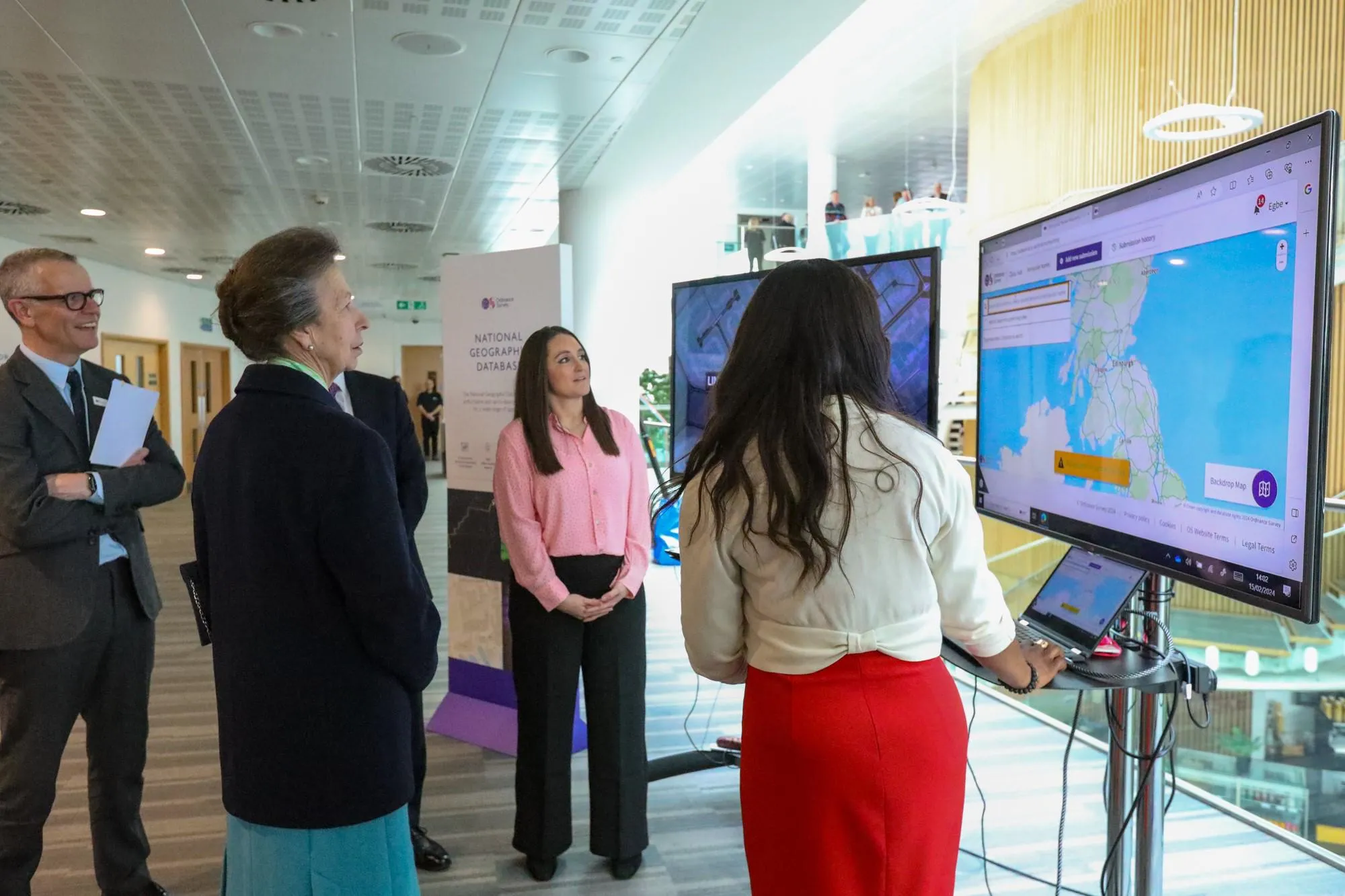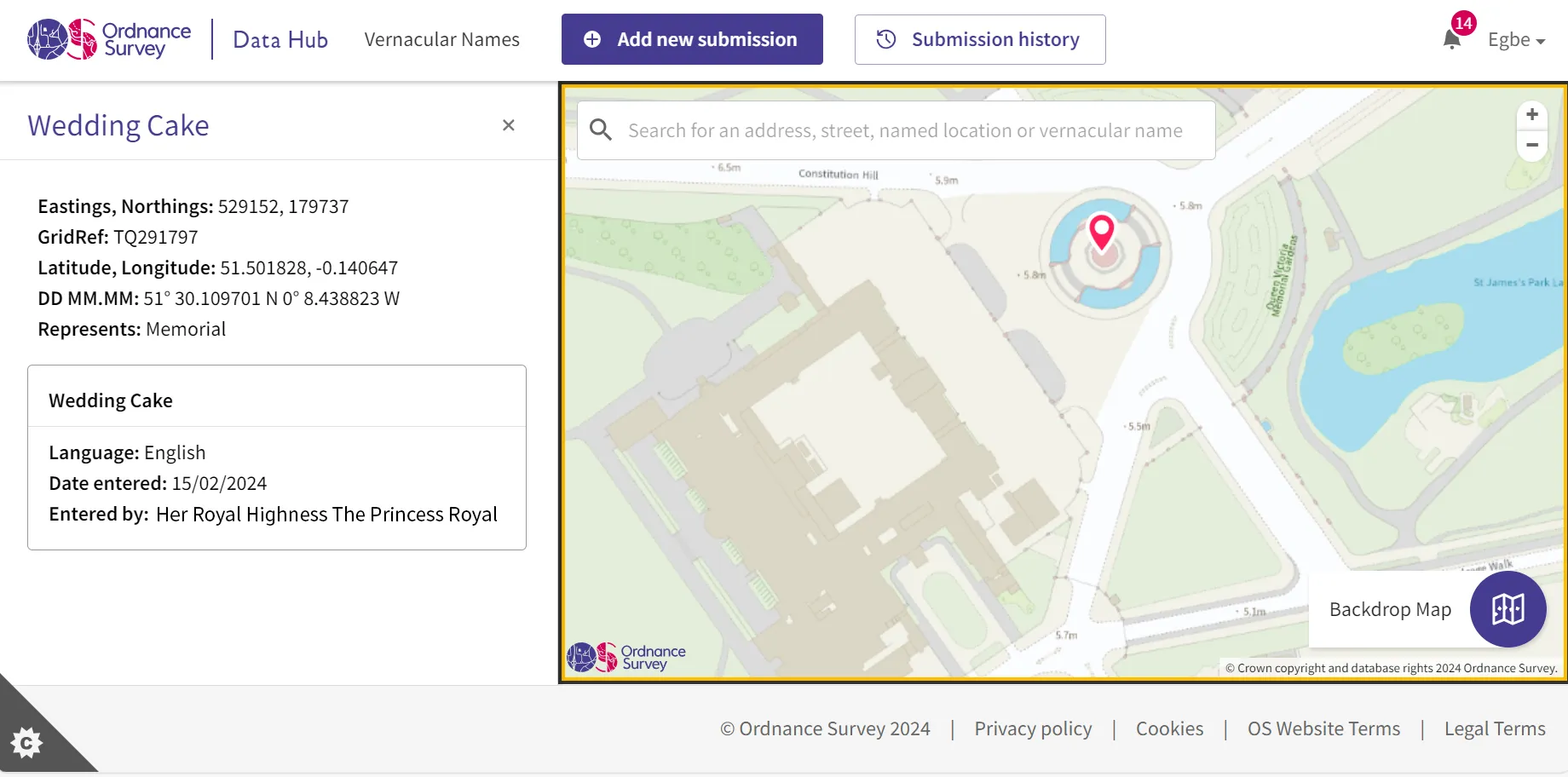New national vernacular mapping tool helps emergency services response
Press Office
Ordnance Survey (OS) has been inviting blue light organisations around Great Britain to input local and colloquial nicknames into a new database called the Vernacular Names Tool.
The database, hosted in the OS Data Hub, is a replacement for FINTAN, a mapping tool created more than ten years ago in response to a request from HM Coastguard. It was created in partnership with OS and was designed to allow users to upload any local name, alternative name or nickname for a coastal feature alongside the accurate location or existing geographic name in the mapping database. These include cliffs, caves, sandbanks, coastal car parks and buildings to name a few. This ensured that HM Coastguard responders could get to emergencies – however their location was described – with much greater confidence and speed. From only having a rough idea of location and needing to search the map to confirm the right place, control room staff could simply type in a location nickname and be given a precise location.
Now most of the contents of FINTAN – including nicknames such as Jabba the Hut, Stink Cove and Harry Potter Bridge – have been uploaded into the Vernacular Names Tool alongside input from new emergency service users across the country, bringing the current volume of names to over nine and a half thousand. It is hoped that highlighting the tool now will encourage even more of the blue light community to participate.
"The Vernacular Tool is an incredibly useful resource for our Maritime Rescue Coordination Centres to have access to. It has allowed local knowledge to be shared across our operational network and there are examples where its use has improved the tasking of critical rescue assets. We are very proud to have played a significant role in its development and we are pleased to see it being made available to colleagues in other emergency services today."
The Tiki Head in Barmouth, Gwynedd, is one example of a vernacular name that guided a Coastguard Rescue Team to the spot on the beach where the caller had fallen and injured their leg. They were carried to safety and passed to an ambulance crew.
Identifying the naturist beach at Morfa Dyffryn, just along the coast from Barmouth, led rescuers to a separate casualty, this time with a hip injury, who was initially thought to be on another stretch of sand further south.
And the Fun Ship at Mostyn docks, on the River Dee, was the clue that helped the HM Coastguard search and rescue helicopter from Caernarfon locate a person who had gone missing in the early hours of the morning.
One of the newer users to the Vernacular Tool is the Welsh Ambulance Services University NHS Trust.
"We find the tool really useful and very easy to use. We want to log as many vernacular names as we can so are exploring how the control room can do that now as well as starting to include this in control room induction training. The real value longer term will be ensuring that our ambulances will be able to get to the scene of an incident effectively with an accurate location provided by OS – no matter how it’s identified by a caller. We have been really happy to work with OS on such a significant project – this is a great initiative."
John Kimmance, Managing Director of OS National Mapping Services, said:
"This is a great example of how OS is fulfilling its public duty to support the emergency services with its trusted and accurate mapping data. Wherever we live, we all have nicknames for local places – and uploading these into a database really could mean the difference between life and death on an emergency call – particularly for services called from outside their regional areas. It is great to see how Fintan added value to the work of HM Coastguard - we are now keen to get more 999 services uploading information into this essential tool."
During a recent visit to OS Headquarters in Southampton, HRH The Princess Royal added a new colloquial name of her own to the database - ‘the wedding cake’ - an alternative name for the Queen Victoria Memorial, which is situated opposite Buckingham Palace in London.
The information from the tool, along with other information on names, places and objects, will ultimately help power the recently launched OS Emergency Services Gazetteer.
OS has a long history of supporting the emergency services with authoritative location data. The Public Sector Geospatial Agreement provides access to OS data for all the emergency services and has become essential in daily operations across the police, fire, ambulance and coastguard services.


Sharing the latest news about OS. We can license you to use OS maps in print, online and film format. For more information and resources for journalists, bloggers and media professionals, email pressoffice@os.uk or call 023 8005 5565.
Using geospatial data and services to support a resilient Britain
Police, Fire and Ambulance, or blue light services, are the key members to our resilience community and through the Public Sector Geospatial Agreement (PSGA) they use a range of OS data to help keep our communities safe.